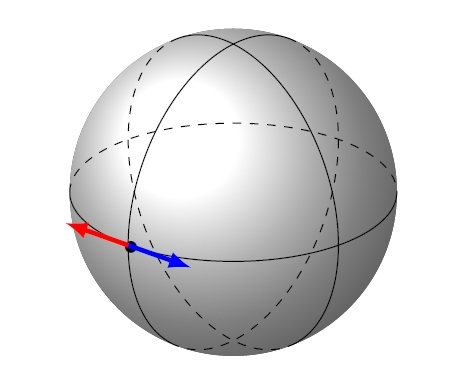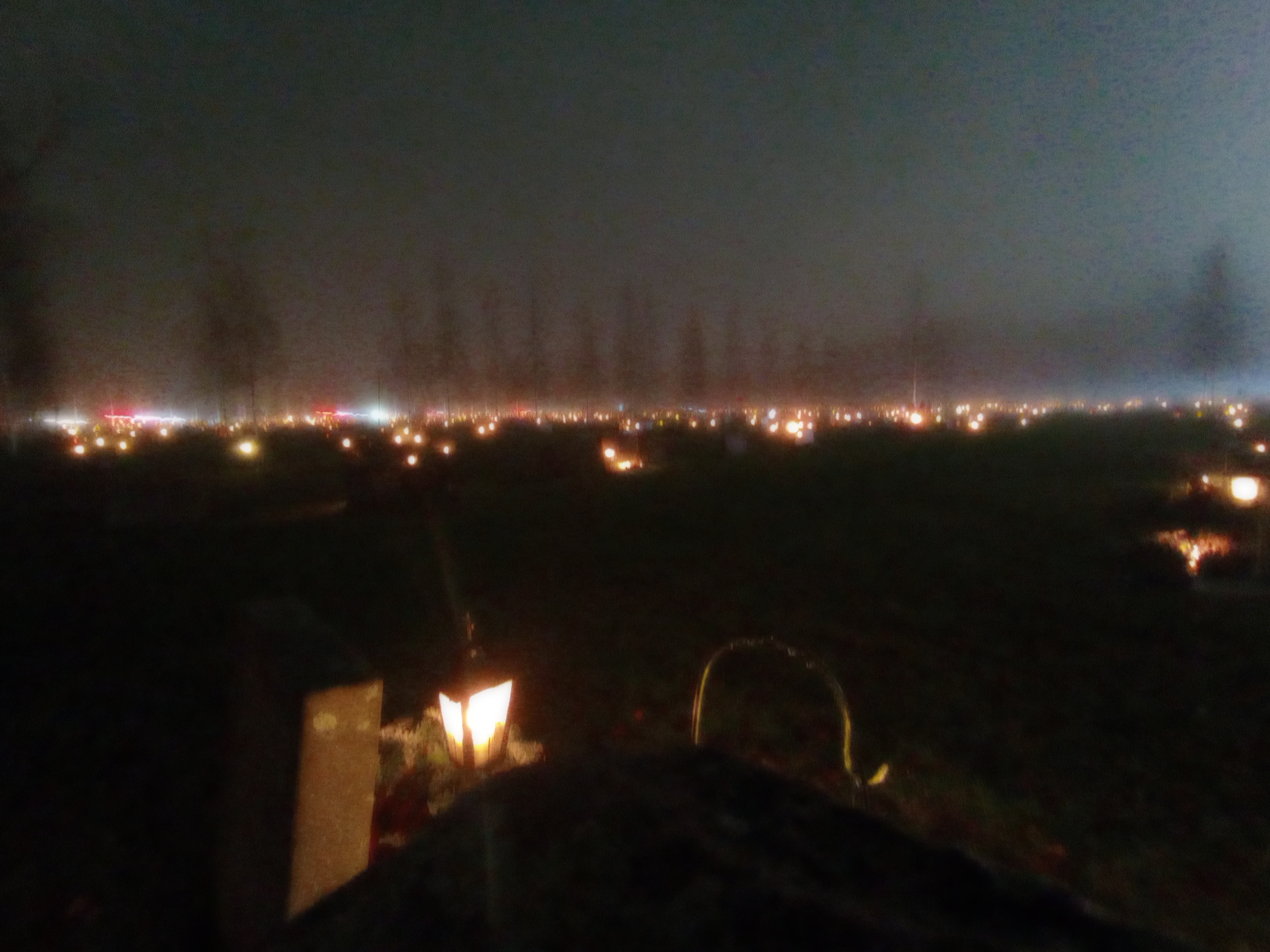I had a piece in Quanta Magazine recently, about a tricky paradox that’s puzzling quantum gravity researchers and some early hints at its resolution.
The paradox comes from trying to describe “closed universes”, which are universes where it is impossible to reach the edge, even if you had infinite time to do it. This could be because the universe wraps around like a globe, or because the universe is expanding so fast no traveler could ever reach an edge. Recently, theoretical physicists have been trying to describe these closed universes, and have noticed a weird issue: each such universe appears to have only one possible quantum state. In general, quantum systems have more possible states the more complex they are, so for a whole universe to have only one possible state is a very strange thing, implying a bizarrely simple universe. Most worryingly, our universe may well be closed. Does that mean that secretly, the real world has only one possible state?
There is a possible solution that a few groups are playing around with. The argument that a closed universe has only one state depends on the fact that nothing inside a closed universe can reach the edge. But if nothing can reach the edge, then trying to observe the universe as a whole from outside would tell you nothing of use. Instead, any reasonable measurement would have to come from inside the universe. Such a measurement introduces a new kind of “edge of the universe”, this time not in the far distance, but close by: the edge between an observer and the rest of the world. And when you add that edge to the calculations, the universe stops being closed, and has all the many states it ought to.
This was an unusually tricky story for me to understand. I narrowly avoided several misconceptions, and I’m still not sure I managed to dodge all of them. Likewise, it was unusually tricky for the editors to understand, and I suspect it was especially tricky for Quanta’s social media team to understand.
It was also, quite clearly, tricky for the readers to understand. So I thought I would use this post to clear up a few misconceptions. I’ll say a bit more about what I learned investigating this piece, and try to clarify what the result does and does not mean.
Q: I’m confused about the math terms you’re using. Doesn’t a closed set contain its boundary?
A: Annoyingly, what physicists mean by a closed universe is a bit different from what mathematicians mean by a closed manifold, which is in turn more restrictive than what mathematicians mean by a closed set. One way to think about this that helped me is that in an open set you can take a limit that takes you out of the set, which is like being able to describe a (possibly infinite) path that takes you “out of the universe”. A closed set doesn’t have that, every path, no matter how long, still ends up in the same universe.
Q: So a bunch of string theorists did a calculation and got a result that doesn’t make sense, a one-state universe. What if they’re just wrong?
A: Two things:
First, the people I talked to emphasized that it’s pretty hard to wiggle out of the conclusion. It’s not just a matter of saying you don’t believe in string theory and that’s that. The argument is based in pretty fundamental principles, and it’s not easy to propose a way out that doesn’t mess up something even more important.
That’s not to say it’s impossible. One of the people I interviewed, Henry Maxfield, thinks that some of the recent arguments are misunderstanding how to use one of their core techniques, in a way that accidentally presupposes the one-state universe.
But even he thinks that the bigger point, that closed universes have only one state, is probably true.
And that’s largely due to a second reason: there are older arguments that back the conclusion up.
One of the oldest dates back to John Wheeler, a physicist famous for both deep musings about the nature of space and time and coining evocative terms like “wormhole”. In the 1960’s, Wheeler argued that, in a theory where space and time can be curved, one should think of a system’s state as including every configuration it can evolve into over time, since it can be tricky to specify a moment “right now”. In a closed universe, you could expect a quantum system to explore every possible configuration…meaning that such a universe should be described by only one state.
Later, physicists studying holography ran into a similar conclusion. They kept noticing systems in quantum gravity where you can describe everything that happens inside by what happens on the edges. If there are no edges, that seems to suggest that in some sense there is nothing inside. Apparently, Lenny Susskind had a slide at the end of talks in the 90’s where he kept bringing up this point.
So even if the modern arguments are wrong, and even if string theory is wrong…it still looks like the overall conclusion is right.
Q: If a closed universe has only one state, does that make it deterministic, and thus classical?
A: Oh boy…
So, on the one hand, there is an idea, which I think also goes back to Wheeler, that asks: “if the universe as a whole has a wavefunction, how does it collapse?” One possibility is that the universe has only one state, so that nobody is needed to collapse the wavefunction, it already is in a definite state.
On the other hand, a universe with only one state does not actually look much like a classical universe. Our universe looks classical largely due to a process called decoherence, where small quantum systems interact with big quantum systems with many states, diluting quantum effects until the world looks classical. If there is only one state, there are no big systems to interact with, and the world has large quantum fluctuations that make it look very different from a classical universe.
Q: How, exactly, are you defining “observer”?
A: A few commenters helpfully chimed in to talk about how physics models observers as “witness” systems, objects that preserve some record of what happens to them. A simple example is a ball sitting next to a bowl: if you find the ball in the bowl later, it means something moved it. This process, preserving what happens and making it more obvious, is in essence how physicists think about observers.
However, this isn’t the whole story in this case. Here, different research groups introducing observers are doing it in different ways. That’s, in part, why none of them are confident they have the right answer.
One of the approaches describes an observer in terms of its path through space and time, its worldline. Instead of a detailed witness system with specific properties, all they do is pick out a line and say “the observer is there”. Identifying that line, and declaring it different from its surroundings, seems to be enough to recover the complexity the universe ought to have.
The other approach treats the witness system in a bit more detail. We usually treat an observer in quantum mechanics as infinitely large compared to the quantum systems they measure. This approach instead gives the observer a finite size, and uses that to estimate how far their experience will be from classical physics.
Crucially, both approaches aren’t a matter of defining a physical object, and looking for it in the theory. Given a collection of atoms, neither team can tell you what is an observer, and what isn’t. Instead, in each approach, the observer is arbitrary: a choice, made by us when we use quantum mechanics, of what to count as an observer and what to count as the rest of the world. That choice can be made in many different ways, and each approach tries to describe what happens when you change that choice.
This is part of what makes this approach uncomfortable to some more philosophically-minded physicists: it treats observers not as a predictable part of the physical world, but as a mathematical description used to make statements about the world.
Q: If these ideas come from AdS/CFT, which is an open universe, how do you use them to describe a closed universe?
A: While more examples emerged later, initially theorists were thinking about two types of closed universes:
First, think about a black hole. You may have heard that when you fall into a black hole, you watch the whole universe age away before your eyes, due to the dramatic differences in the passage of time caused by the extreme gravity. Once you’ve seen the outside universe fade away, you are essentially in a closed universe of your own. The outside world will never affect you again, and you are isolated, with no path to the outside. These black hole interiors are one of the examples theorists looked at.
The other example are so-called “baby universes”. When physicists use quantum mechanics to calculate the chance of something happening, they have to add up every possible series of events that could have happened in between. For quantum gravity, this includes every possible arrangement of space and time. This includes arrangements with different shapes, including ones with tiny extra “baby universes” which branch off from the main universe and return. Universes with these “baby universes” are another example that theorists considered to understand closed universes.
Q: So wait, are you actually saying the universe needs to be observed to exist? That’s ridiculous, didn’t the universe exist long before humans existed to observe it? Is this some sort of Copenhagen Interpretation thing, or that thing called QBism?
You’re starting to ask philosophical questions, and here’s the thing:
There are physicists who spend their time thinking about how to interpret quantum mechanics. They talk to philosophers, and try to figure out how to answer these kinds of questions in a consistent and systematic way, keeping track of all the potential pitfalls and implications. They’re part of a subfield called “quantum foundations”.
The physicists whose work I was talking about in that piece are not those people.
Of the people I interviewed, one of them, Rob Myers, probably has lunch with quantum foundations researchers on occasion. The others, based at places like MIT and the IAS, probably don’t even do that.
Instead, these are people trying to solve a technical problem, people whose first inclination is to put philosophy to the side, and “shut up and calculate”. These people did a calculation that ought to have worked, checking how many quantum states they could find in a closed universe, and found a weird and annoying answer: just one. Trying to solve the problem, they’ve done technical calculation work, introducing a path through the universe, or a boundary around an observer, and seeing what happens. While some of them may have their own philosophical leanings, they’re not writing works of philosophy. Their papers don’t talk through the philosophical implications of their ideas in all that much detail, and they may well have different thoughts as to what those implications are.
So while I suspect I know the answers they would give to some of these questions, I’m not sure.
Instead, how about I tell you what I think?
I’m not a philosopher, I can’t promise my views will be consistent, that they won’t suffer from some pitfall. But unlike other people’s views, I can tell you what my own views are.
To start off: yes, the universe existed before humans. No, there is nothing special about our minds, we don’t have psychic powers to create the universe with our thoughts or anything dumb like that.
What I think is that, if we want to describe the world, we ought to take lessons from science.
Science works. It works for many reasons, but two important ones stand out.
Science works because it leads to technology, and it leads to technology because it guides actions. It lets us ask, if I do this, what will happen? What will I experience?
And science works because it lets people reach agreement. It lets people reach agreement because it lets us ask, if I observe this, what do I expect you to observe? And if we agree, we can agree on the science.
Ultimately, if we want to describe the world with the virtues of science, our descriptions need to obey this rule: they need to let us ask “what if?” questions about observations.
That means that science cannot avoid an observer. It can often hide the observer, place them far away and give them an infinite mind to behold what they see, so that one observer is essentially the same as another. But we shouldn’t expect to always be able to do this. Sometimes, we can’t avoid saying something about the observer: about where they are, or how big they are, for example.
These observers, though, don’t have to actually exist. We should be able to ask “what if” questions about others, and that means we should be able to dream up fictional observers, and ask, if they existed, what would they see? We can imagine observers swimming in the quark-gluon plasma after the Big Bang, or sitting inside a black hole’s event horizon, or outside our visible universe. The existence of the observer isn’t a physical requirement, but a methodological one: a restriction on how we can make useful, scientific statements about the world. Our theory doesn’t have to explain where observers “come from”, and can’t and shouldn’t do that. The observers aren’t part of the physical world being described, they’re a precondition for us to describe that world.
Is this the Copenhagen Interpretation? I’m not a historian, but I don’t think so. The impression I get is that there was no real Copenhagen Interpretation, that Bohr and Heisenberg, while more deeply interested in philosophy than many physicists today, didn’t actually think things through in enough depth to have a perspective you can name and argue with.
Is this QBism? I don’t think so. It aligns with some things QBists say, but they say a lot of silly things as well. It’s probably some kind of instrumentalism, for what that’s worth.
Is it logical positivism? I’ve been told logical positivists would argue that the world outside the visible universe does not exist. If that’s true, I’m not a logical positivist.
Is it pragmatism? Maybe? What I’ve seen of pragmatism definitely appeals to me, but I’ve seen my share of negative characterizations as well.
In the end, it’s an idea about what’s useful and what’s not, about what moves science forward and what doesn’t. It tries to avoid being preoccupied with unanswerable questions, and as much as possible to cash things out in testable statements. If I do this, what happens? What if I did that instead?
The results I covered for Quanta, to me, show that the observer matters on a deep level. That isn’t a physical statement, it isn’t a mystical statement. It’s a methodological statement: if we want to be scientists, we can’t give up on the observer.
equipped with a binary operation
(or, equivalently, a
multiplication table). An equational law is an equation involving this operation and a number of indeterminate variables. Some examples of equational laws, together with the number that we assigned to that law, include
(Trivial law):
(Singleton law):
(Commutative law):
(Central groupoid law):
(Associative law):
, and conversely the singleton law
implies all the others. On the other hand, the commutative law
does not imply the associative law
(because there exist magmas that are commutative but not associative), nor is the converse true. All in all, there are
implications of this type to settle; most of these are relatively easy and could be resolved in a matter of minutes by an expert in college-level algebra, but prior to this project, it was impractical to actually do so in a manner that could be feasibly verified. Also, this problem is known to become undecidable for sufficiently long equational laws. Nevertheless, we were able to resolve all the implications informally after two months, and have them completely formalized in Lean after a further five months.
was a (commutative or noncommutative) ring and the magma operation took the form
for some coefficients
, turned out to resolve many cases.
but not another
, by starting with a base magma
that obeyed both laws, taking a Cartesian power
of that magma, and then “twisting” the magma operation by certain permutations of
designed to preserve
but not
.
” which were tractable to compute, and again gave ways to construct magmas that obeyed one law
but not another
.
, as well as some seed entries designed to enforce a counterexample to a separate law
. Despite the apparent complexity of this method, it can be automated in a manner that allowed for many outstanding implications to be refuted.
implications except for one (and its dual):
(E677) imply the law
(E255) for finite magmas?













































